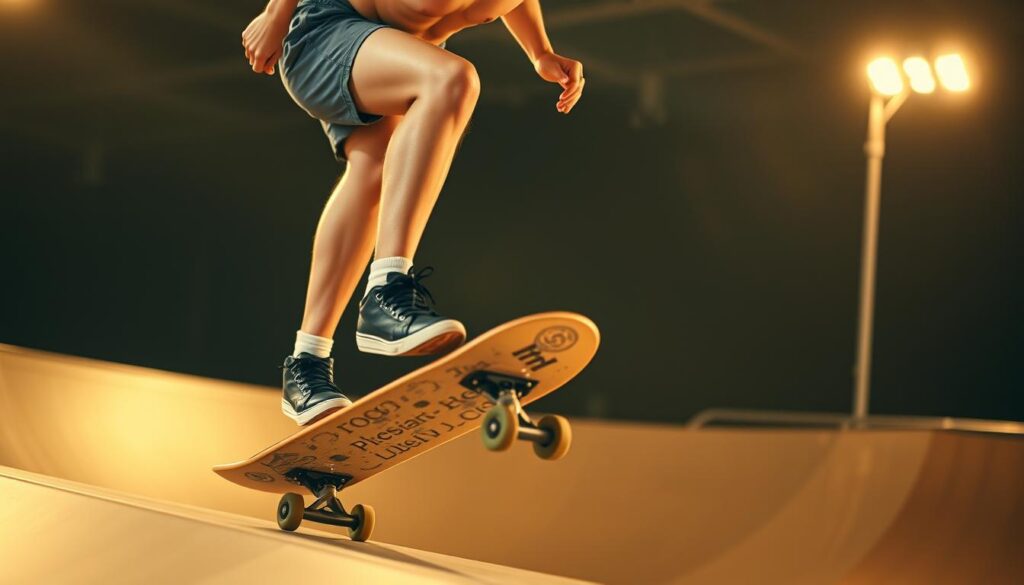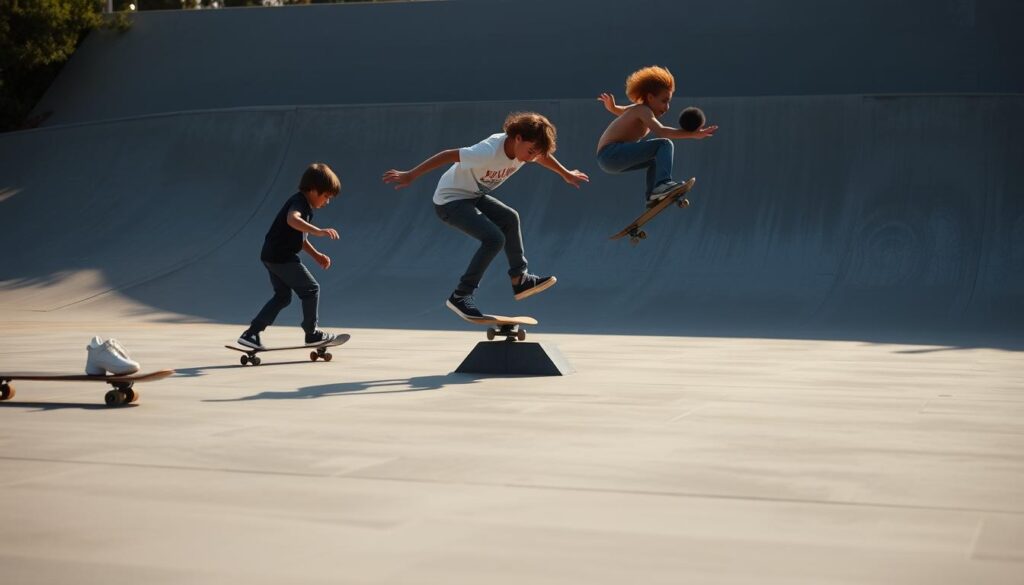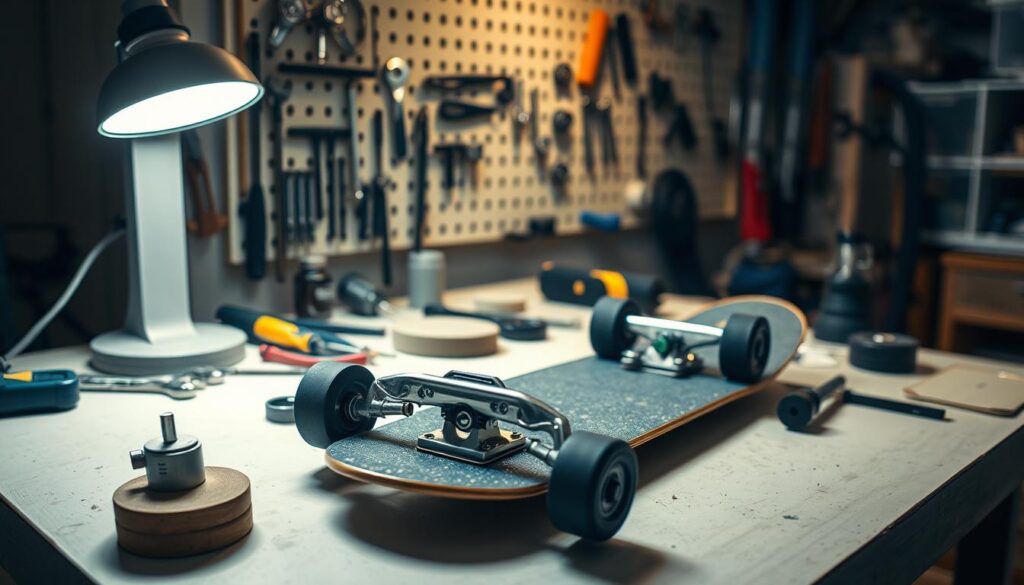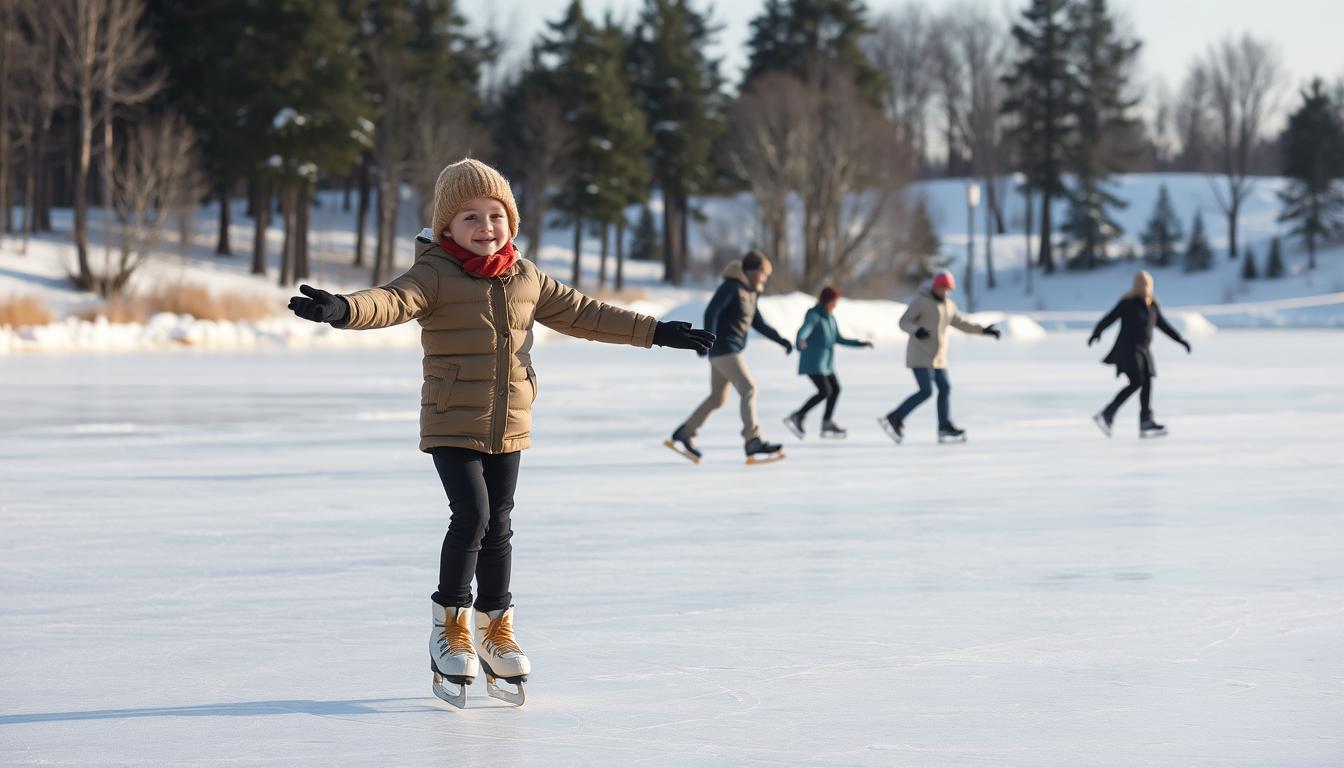If Skating is Hard: Advice for New Skaters
Stepping onto a skating surface is like entering a new world. It’s full of challenges and opportunities. Yes, skating is hard, but you can conquer it with the right mindset.
Learning to skate is more than just moving. It’s a challenge that changes your body and boosts your confidence. Every skater starts with uncertainty and excitement.
Whether you’re into roller, inline, or ice skating, the basics are the same. Knowing that skating is hard helps you feel less alone. Progress comes from practice, proper technique, and celebrating small wins.
Skating instructors say fear is the biggest hurdle for beginners. Your body can adapt in amazing ways. The trick is to break down movements and build muscle memory slowly.
Common challenges include:
• Keeping your balance
• Coordinating leg movements
• Understanding how to distribute your weight
• Overcoming the fear of falling
• Building core strength and stability
Don’t worry about the tough times. Every pro started as a beginner. Skating skills grow with patience and practice. Your journey will have ups and downs, but it’s worth it.
This guide will help you go from a hesitant beginner to a confident skater. We’ll share techniques and advice. You’ll see that while skating is tough, it’s also incredibly rewarding with dedication.
Understanding the Basics of Skating
Starting with skating can seem tough for beginners. The skill level varies by type, but with the right steps, anyone can master it. This guide will cover the basics and help beginners get started.
Exploring Skating Disciplines
There are many exciting paths for beginners:
- Roller Skating: Ideal for both indoor and outdoor skating
- Inline Skating: Best for those who love speed and fitness
- Figure Skating: Focuses on artistic movements
- Skateboarding: Offers a dynamic urban style
Essential Equipment for Beginners
Choosing the right gear is key for beginners. It helps manage the learning curve and keeps you safe. Here are some tips:
| Equipment | Recommended for Beginners |
|---|---|
| Skates | Look for comfortable, well-fitting skates with good ankle support |
| Wheels | Choose softer wheels for better grip and stability |
| Bearings | ABEC-5 or ABEC-7 bearings are best for smooth rolling |
Safety Gear Requirements
Wearing the right gear is essential for safety. Beginners should always wear:
- Helmet
- Knee pads
- Elbow pads
- Wrist guards
Remember, the right gear makes learning easier and boosts confidence. Start slow, practice often, and enjoy your skating journey!
Is Skating Hard? Breaking Down the Learning Curve
Skating might seem tough at first, but knowing the learning curve changes everything. Is skating hard? It really depends on a few important things. These things help you go from a beginner to a confident skater.
Everyone learns skating in their own way. Some people get it fast, while others take more time. The important thing is to see skating challenges as part of learning, not as big hurdles.
- Physical fitness is key in learning to skate
- How you think affects how fast you get better
- Practicing regularly helps overcome skating challenges
Your first time skating will likely be a bit shaky and you might fall. This is completely normal! Even pro skaters started where you are now – unsure but eager to learn.
| Skill Level | Learning Time | Key Challenges |
|---|---|---|
| Beginner | 2-4 weeks | Balance and coordination |
| Intermediate | 2-3 months | Advanced techniques |
| Advanced | 6-12 months | Complex maneuvers |
Skating is a skill that needs patience and hard work. Your confidence will grow with each practice. What starts as a challenge becomes a chance for personal growth.
Physical Requirements for Successful Skating
Mastering skateboarding isn’t about being superhuman. It’s about knowing your body’s limits and improving your skills. Skating requires a mix of athletic traits that anyone can get better at with practice.

- Balance and body awareness
- Core muscle strength
- Overall physical endurance
Balance and Coordination
Getting better at skateboarding begins with balance. Skaters need to control their body and know where they are in space. Proprioception – knowing your body’s position – is key for skating on different surfaces.
Try these balance exercises:
- Single-leg stands
- Yoga balance poses
- Wobble board practice
Core Strength and Flexibility
A strong core is essential for skateboarding. Your abs and lower back help you move smoothly and control your board better.
| Core Muscle Group | Skateboarding Benefit |
|---|---|
| Abdominal Muscles | Provides stability during turns |
| Lower Back Muscles | Supports balance and posture |
| Obliques | Enables rotational movements |
Endurance Requirements
Skateboarding is a workout for your whole body, needing good heart health. Doing cardio like running, cycling, or swimming helps your skating.
Begin with short skate sessions and slowly add more time. Your body will get used to it, helping you skate longer and more skillfully.
Common Challenges New Skaters Face
Learning to skate isn’t always easy. Every beginner faces challenges that can seem daunting. Knowing these common hurdles helps new skaters build confidence and develop resilience.
Skating challenges often start with balance and fear. Many beginners struggle to stay balanced and fear falling. These mental and physical barriers are normal in the learning process.
- Fear of falling and losing control
- Difficulty maintaining proper balance
- Struggling with basic movement techniques
- Navigating different skating surfaces
Beginner skater advice suggests focusing on core strength and gradual skill development. Practice and patience are key to overcoming initial obstacles. Professional instructors recommend breaking down complex movements into smaller, manageable steps.
Mental preparation is key in conquering skating challenges. Developing a positive mindset helps skaters push through initial discomfort and build muscle memory. Visualization techniques and controlled practice sessions can significantly reduce anxiety.
- Start with protective gear
- Practice in safe, controlled environments
- Take lessons from experienced instructors
- Watch tutorial videos for technique improvement
Remember, every professional skater started exactly where you are now. Skating challenges are simply opportunities for growth and skill development. Embrace the learning process, stay persistent, and enjoy the journey of becoming a confident skater.
Getting Started: First Steps on the Board
Getting on a skateboard for the first time can be scary. But, with the right steps, you’ll soon feel confident. This guide will show you the key techniques to help you ride smoothly.
Learning to skateboard starts with knowing how your body works with the board. Beginners often find balance and technique hard. But, breaking it down into simple steps makes it easier to learn.
Finding Your Stance
Your skateboarding journey begins with finding your natural stance. Most skaters fall into two main categories:
- Regular stance: Left foot forward
- Goofy stance: Right foot forward
To find your stance, try this test: Have someone gently push you from behind. The foot you naturally step forward with is your dominant skating foot.
Basic Pushing Techniques
Pushing well is key when you start to skate. Here’s how to begin:
- Place your front foot near the board’s front bolts
- Keep your body balanced and centered
- Use your back foot to push off
- Smoothly bring your back foot back to the board
Learning to Stop
Safety is important in skateboarding. Beginners should learn two main stopping methods:
- Foot brake: Drag your back foot on the ground
- Tail drag: Press down on the board’s tail to slow down
Practice these stops in a safe area with smooth ground. Always wear protective gear and take your time to build confidence.
Building Confidence Through Practice

Improving skating skills is more than just getting on a board. Successful skaters know that confidence comes from focused practice. For beginners, a smart practice plan can turn shaky moves into smooth ones.
Deliberate practice is key to getting better. Skaters should do specific drills to learn complex moves step by step.
- Set specific skill goals for each practice session
- Record your progress with a skating journal
- Practice fundamental techniques repeatedly
- Break complex moves into smaller, achievable components
Having a regular practice routine builds muscle memory and boosts confidence. Start with short, focused sessions to improve technique. Beginners should aim for 30-45 minutes of quality practice.
Mental preparation is also important. Visualization can help skaters face fears and build confidence. Imagine yourself doing each move well before trying it.
- Watch tutorial videos
- Practice balance exercises off the board
- Join local skating groups for support
- Celebrate small victories
Every pro skater began where you are now. Be patient, keep practicing, and stay positive to become a confident skater.
Essential Safety Tips for Beginners
Skating has its risks, but being prepared can make it safer. Learning safety tips is key for beginners. It helps you enjoy skating without worry.
Start by planning and staying alert. It’s important to be both excited and careful when you start.
Choosing Safe Practice Locations
Finding the right place to skate is vital. Look for areas that are:
- Smooth and flat
- Less crowded
- Well-lit
- Free from big obstacles
Proper Fall Techniques
Knowing how to fall safely is important. Skaters say to:
- Stay loose when falling
- Spread out the impact
- Practice rolling to protect yourself
- Always wear protective gear
Emergency Prevention
Being proactive can prevent most accidents. Always have basic first-aid items with you. Know your limits too.
| Safety Gear | Purpose |
|---|---|
| Helmet | Protects your head |
| Knee Pads | Helps absorb impact |
| Wrist Guards | Prevents wrist fractures |
Confident skaters always put safety first. With practice, patience, and safety steps, you’ll skate better and safer.
Mastering Basic Skating Techniques
Learning solid skateboarding techniques is key to becoming a confident skater. It takes patience, practice, and knowing the basics of movement. Beginners can improve by focusing on important techniques that help build muscle memory and control.
Let’s look at the basic skateboarding techniques every beginner should learn:
- Foot Placement: Getting your feet right on the board is vital for balance and control
- Pushing Technique: It’s important to learn how to push well without losing balance
- Weight Distribution: Knowing how to move your weight smoothly during turns is essential
- Stopping Methods: It’s important to practice safe and controlled stopping
For beginners, start with these core techniques:
- Practice balancing on the board without moving
- Master gentle pushing motions
- Learn basic turning techniques
- Develop consistent foot positioning
Focus on body alignment, smooth weight transfer, and keeping a relaxed yet alert stance. Skaters who work on these basics will see big improvements in their skills and confidence.
Practice regularly and slowly get better. Start with simple, controlled movements and add more complexity as you get better. Remember, every pro skater started where you are now – with basic skills and a love for learning.
Progressive Learning: From Basics to Advanced
Learning to skate is an exciting journey. It turns beginners into confident riders. It’s not just about standing on a board. It’s about understanding your growth and celebrating each step.

Your skateboarding journey is a path of skill development. The key is patience and consistent practice. Each stage builds on the last, creating a strong base for advanced skills.
Milestone Achievement Guide
Tracking your progress keeps you motivated. Here’s a guide to key milestones:
- Week 1-2: Basic balance and standing on the board
- Week 3-4: Pushing and simple forward movement
- Week 5-6: Turning and basic stopping techniques
- Week 7-8: Introduction to small tricks and improved control
Skill Development Timeline
Every skater learns at their own pace. Here’s a typical progression map:
| Skill Level | Key Techniques | Practice Time |
|---|---|---|
| Beginner | Balance, Pushing, Stopping | 2-4 weeks |
| Intermediate | Turns, Basic Ollies, Controlled Riding | 4-8 weeks |
| Advanced | Complex Tricks, Ramp Riding | 8-12 weeks |
Pro tip: Consistency matters more than perfection. Practice regularly, stay patient, and enjoy the learning process!
Common Mistakes to Avoid
Every skater faces obstacles. Knowing common challenges helps beginners move forward faster and feel more confident. It turns learning into an exciting journey.
New skaters often make big mistakes. These errors can slow them down and affect their mindset. They can make you doubt your skating abilities.
- Neglecting proper safety gear
- Skipping fundamental technique training
- Comparing yourself to advanced skaters
- Practicing in unsuitable environments
- Ignoring body alignment and posture
Many beginners set unrealistic goals. They try hard moves before learning the basics. This can lead to injuries and frustration.
Beginners should start with professional lessons, good equipment, and patience. Focus on improving little by little. Don’t rush into hard moves too soon.
- Take lessons from certified instructors
- Practice consistent, short training sessions
- Watch tutorial videos
- Join beginner skating communities
Mental preparation is key to beating skating challenges. Remember, mistakes are part of learning. This keeps you motivated and stops you from getting discouraged.
Mental Preparation and Overcoming Fear
Skating is more than just physical skills. Is skating hard? The mental game is key to your success. Learning to build mental resilience can turn skating from scary to thrilling.
Your mindset affects how well you learn and improve. Fear can stop new skaters, but the right mental strategies can help you overcome it.
Building Mental Resilience
Mental resilience in skating means facing challenges with a positive attitude. Here are ways to boost your mental game:
- Practice visualization techniques
- Use positive self-talk
- Set realistic goals
- Embrace a growth mindset
Dealing with Setbacks
Every skater faces falls and frustrations. The key is to view these moments as learning opportunities. Setbacks are not failures but steps towards progress.
Here are ways to handle setbacks:
- Analyze what went wrong
- Practice self-compassion
- Break skills into smaller steps
- Celebrate small victories
Remember, confidence grows with practice and a positive mindset. Every time you skate, you’re getting stronger mentally and physically.
Equipment Maintenance and Care

Keeping your skateboard in good shape is key for any beginner. Your gear is an investment in your passion. Taking care of it means it will last longer and perform better.
Skate maintenance is more than just cleaning. It’s about knowing how each part works and keeping it in top shape. Regular care makes your skateboard last longer and improves your skating.
Essential Maintenance Checklist
- Clean bearings after every few rides
- Check wheel alignment regularly
- Inspect deck for cracks or wear
- Tighten trucks and hardware
For beginners, taking care of your gear is essential. Here’s a detailed guide on how to maintain your skateboard:
| Component | Maintenance Frequency | Care Technique |
|---|---|---|
| Bearings | Every 2-3 weeks | Clean with bearing cleaner, lubricate |
| Wheels | Monthly | Rotate for even wear, check alignment |
| Deck | Quarterly | Inspect for damage, replace if needed |
How you store your skateboard is important. Always store your board in a cool, dry place away from sunlight and moisture. Hang it vertically or use a rack to avoid warping and damage.
Spending time on maintenance will greatly improve your skills and save you money. A well-maintained skateboard is your best friend on your skateboarding journey.
Finding Support and Community
Skating isn’t just a solo journey—it’s about connecting with others who share your passion. When you learn to skate, finding the right support can transform your experience from challenging to exhilarating. The skating community offers incredible resources to help you improve your skating skills and build confidence.
Local Skating Groups
Discovering local skating groups can accelerate your learning and make practice more enjoyable. These communities provide:
- Structured group lessons
- Regular practice meetups
- Skill-sharing opportunities
- Motivation and accountability
Online Resources
Digital platforms have revolutionized how skaters connect and learn. Explore these online spaces to expand your skating knowledge:
- Social media skating groups
- YouTube tutorial channels
- Skating forums and discussion boards
- Instagram skating communities
Professional Instruction Options
Working with a professional instructor can dramatically improve your technique and confidence. Consider these professional learning paths:
- Private coaching sessions
- Skating workshops
- Beginner-friendly skating clinics
- Community center classes
Remember, the right support network can transform your skating journey from intimidating to inspiring. Reach out, connect, and watch your skills soar!
Tracking Your Progress
Improving your skating skills needs a smart plan to watch your growth. Every skater’s path is different. Keeping track of your progress keeps you motivated and shows where you need to get better at skateboarding.
Having a personal way to track your progress can change how you learn. Here are some good ways to do it:
- Maintain a dedicated skating journal
- Record video practice sessions
- Set specific skill milestones
- Use performance tracking apps
When you track your skateboarding progress, focus on quantifiable metrics. Look at things like:
- Time spent practicing
- Number of successful tricks learned
- Distance traveled without losing balance
- Confidence level in different skating environments
Professional skaters say setting SMART goals helps you get better faster. Break down hard skills into smaller, doable goals. This way, you avoid feeling overwhelmed and have clear goals to work towards.
Seeing your progress is key. Recording your practice lets you check your technique, spot mistakes, and celebrate small wins in mastering skateboarding.
Remember, progress isn’t always steady. Some days you’ll make big strides, others might be tougher. Keep being patient and consistent, and you’ll see big improvements in your skating.
Conclusion
Learning to skate isn’t about being perfect. It’s about making progress. Whether you’re new to skating or dreaming of becoming a pro, remember that everyone starts somewhere. The skills you’ve learned will guide you to becoming confident and skilled.
Is skating hard? It can be tough, but with the right attitude and practice, you’ll get better. Every step you take and every fall you make helps you grow. You’re one step closer to being the skater you want to be.
Your skating journey is special. You’ve learned the basics and how to stay mentally strong. What once seemed hard will become your fun challenge. Be patient, celebrate your wins, and enjoy the journey.
It’s time to start your skating adventure. Your skates are ready, and the path is open. The skating world welcomes you. So, take a deep breath, push off, and have fun!






